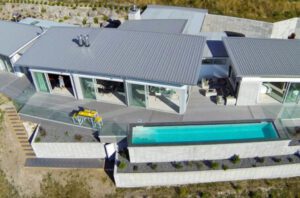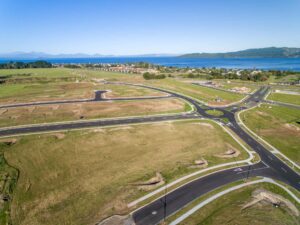Understanding the Subdivision Process in New Zealand
Subdividing land or buildings creates one or more new ‘parcels’ or may involve shifting an existing boundary. It’s a powerful tool for landowners looking to unlock value or reshape property use, and with the right support, it can be a smooth and rewarding process.
Types of Subdivision
There are three main types of subdivision in New Zealand:
- Fee Simple (Freehold): The most common form of subdivision, creating individually owned sections with no shared land.
- Cross Lease: Common in older urban developments, where multiple owners share the underlying land and lease their portion.
- Unit Title: Typically used for apartment blocks or multi-unit developments, where ownership relates to both a physical unit and a share of common property.
Māori land is subject to a separate process known as a ‘Partition,’ managed through the Māori Land Court.
Where to Start
The first step is to engage a land development consultant such as Cheal to assess your site’s feasibility and discuss options. Every site is different, and what is possible will depend on your local Council’s rules around parcel size, services, and infrastructure.
Your consultant will guide you through the preliminary work, which may include:
- A topographic survey
- Site visit
- Hazards, Geotechnical or soil contamination investigations
- Agricultural or infrastructure reports
- Neighbour approvals (if required)
- Confirmation of service connections
It’s also worth speaking with your solicitor, accountant, mortgage advisor, or valuer early to understand financial and legal implications.
Lodging a Resource Consent Application
Once your proposal is ready, your planner will prepare and lodge a resource consent application with Council. While Council has 20 working days to process it, this timeframe may be extended, particularly if a Request for Further Information is issued, which places the application on hold until the additional details are provided and accepted.
Once satisfied, Council will issue a decision. Most applications are approved and come with a set of conditions that must be met to progress the subdivision.
Meeting the Consent Conditions
There are typically two types of conditions to meet:
Legal and Survey Requirements:
– Boundary pegging by a licensed surveyor
– Legal documentation such as easements or consent notices
– Development contributions (financial contributions to Council)
These must generally be completed within five years of consent being granted
Physical Works:
– Accessways, vehicle crossings
– Power, water, wastewater, and stormwater connections
These works must meet specific standards outlined in the consent and be carried out by qualified contractors, no later than three years after the survey is completed.
These two stages can be completed concurrently to obtain titles quickly if required.
Applying to Council for a Completion Certificate
Once all conditions are met, your consultant will apply to Council for a Completion Certificate. This confirms the subdivision meets all approved requirements. There is no formal processing timeframe, so it’s best to allow several weeks for this step.
Finalising Titles with LINZ
Following Council approval, your surveyor and solicitor will lodge the required documents with Land Information New Zealand (LINZ). LINZ will review the technical details and, once everything is assessed and approved, they will issue the new Records of Title, completing your subdivision.
Need Advice?
Whether you are in the early stages of exploring your options or ready to proceed, the team at Cheal can help with their team of experts. Contact us today to start your subdivision process.





